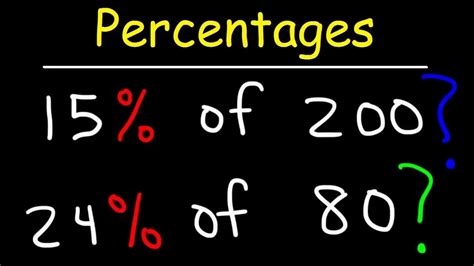157 Out Of 200 As A Percentage
Kalali
Mar 27, 2025 · 4 min read

Table of Contents
157 out of 200 as a Percentage: A Comprehensive Guide to Percentage Calculations
Understanding percentages is a fundamental skill applicable across various fields, from academic assessments to financial calculations and everyday life. This article delves into the calculation of 157 out of 200 as a percentage, providing a step-by-step guide, exploring different calculation methods, and offering practical applications and related percentage problems. We’ll also touch upon the importance of percentage calculations in various real-world scenarios.
What is a Percentage?
A percentage is a way of expressing a number as a fraction of 100. The word "percent" literally means "out of 100" (per centum in Latin). Percentages are used to represent proportions, ratios, and changes in values. They are a common and easily understood way to compare different quantities.
Calculating 157 out of 200 as a Percentage: The Basic Method
The most straightforward method to calculate 157 out of 200 as a percentage involves these steps:
-
Form a fraction: Express the given numbers as a fraction. In this case, it's 157/200.
-
Convert the fraction to a decimal: Divide the numerator (157) by the denominator (200). 157 ÷ 200 = 0.785
-
Convert the decimal to a percentage: Multiply the decimal by 100 and add the percentage symbol (%). 0.785 x 100 = 78.5%
Therefore, 157 out of 200 is 78.5%.
Alternative Calculation Methods
While the above method is the most common, other approaches can be employed, particularly when dealing with more complex scenarios or when using different tools like calculators or spreadsheets.
Method 2: Using Proportions
You can set up a proportion to solve this:
- Let x be the percentage we want to find.
- We can write the proportion as: 157/200 = x/100
To solve for x, cross-multiply:
200x = 157 * 100 200x = 15700 x = 15700 / 200 x = 78.5
Therefore, x = 78.5%, confirming our previous result.
Method 3: Using a Calculator
Most calculators have a percentage function. Simply enter 157 ÷ 200 and then press the percentage button (%). The calculator will directly display the result as 78.5%.
Method 4: Using Spreadsheets
Spreadsheets like Microsoft Excel or Google Sheets offer built-in functions to calculate percentages. The formula =157/200 will return the decimal 0.785. Formatting the cell as a percentage will automatically display it as 78.5%.
Practical Applications of Percentage Calculations
The ability to calculate percentages accurately is invaluable in a wide range of situations:
-
Academic Performance: Calculating grades, assessing test scores, and determining overall academic performance. For example, if a student scores 157 out of 200 on an exam, their percentage score is 78.5%, indicating a good performance.
-
Financial Calculations: Calculating interest rates, discounts, taxes, profits, and losses. Understanding percentages is crucial for budgeting, investing, and managing personal finances. For example, a 78.5% return on an investment represents a significant gain.
-
Data Analysis and Statistics: Presenting data in a concise and understandable format. Percentages are often used in charts, graphs, and reports to represent proportions and trends.
-
Retail and Sales: Calculating discounts, markups, profit margins, and sales tax. A retailer offering a 21.5% discount on an item (100% - 78.5%) would be a significant incentive.
-
Science and Engineering: Expressing experimental results, error margins, and statistical significance.
-
Everyday Life: Determining tips, calculating sales tax, understanding discounts, and comparing prices.
Related Percentage Problems
Let's explore some related percentage problems to solidify our understanding:
Problem 1: If a student scores 120 out of 150 on a test, what is their percentage score?
Solution: 120/150 = 0.8 x 100 = 80%
Problem 2: A store offers a 20% discount on an item originally priced at $100. What is the sale price?
Solution: 20% of $100 is (20/100) * $100 = $20. The sale price is $100 - $20 = $80.
Problem 3: If a company's profit increased from $50,000 to $75,000, what is the percentage increase?
Solution: The increase is $75,000 - $50,000 = $25,000. The percentage increase is ($25,000/$50,000) * 100 = 50%.
Importance of Accurate Percentage Calculations
Accuracy in percentage calculations is crucial because errors can have significant consequences, particularly in financial and scientific contexts. A small error in a percentage calculation can lead to incorrect conclusions and potentially substantial financial losses or flawed scientific results. Always double-check your calculations and utilize different methods to verify your answers.
Conclusion
Calculating 157 out of 200 as a percentage is a simple yet fundamental mathematical operation. Understanding this calculation and related percentage problems is essential for success in various fields and everyday life. Mastering percentage calculations empowers you to analyze data, make informed decisions, and navigate various aspects of personal and professional life effectively. The ability to confidently and accurately calculate and interpret percentages is an invaluable skill that significantly enhances your analytical capabilities. Remember to always check your work and utilize multiple methods to ensure accuracy.
Latest Posts
Latest Posts
-
How Many Feet Is 236 Inches
Mar 30, 2025
-
Least Common Multiple Of 10 And 5
Mar 30, 2025
-
Difference Between Chemical Change And Chemical Property
Mar 30, 2025
-
8 Pints Is How Many Cups
Mar 30, 2025
-
30 Meters Is How Many Feet
Mar 30, 2025
Related Post
Thank you for visiting our website which covers about 157 Out Of 200 As A Percentage . We hope the information provided has been useful to you. Feel free to contact us if you have any questions or need further assistance. See you next time and don't miss to bookmark.
